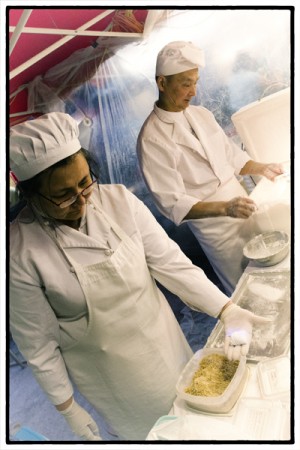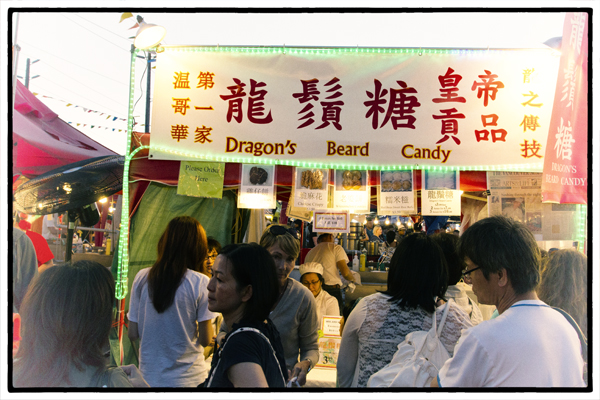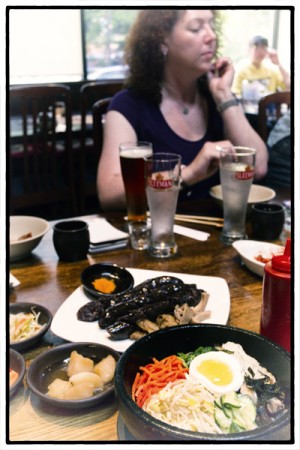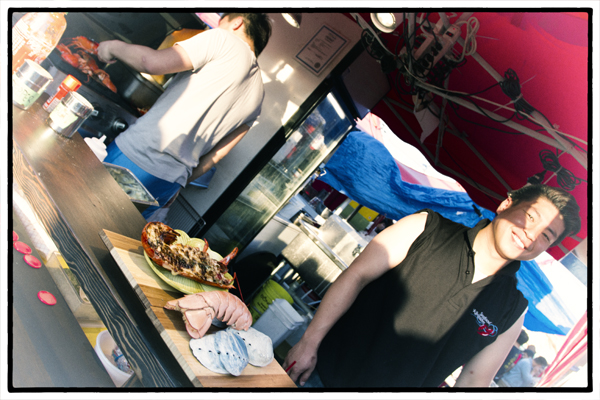So Mijune and I were gobbling up some serious crispy skin pork from Parker Place Meat & BBQ when Mijune spotted a place where they sell dragon’s beard candy. She bought a little four-pack of the stuff and I tried it. It was okay. Not great, but okay.
And then a few days later, we were at T&T, the Asian supermarket, and, again, we got some dragon’s beard candy. I liked it better this time.
So last weekend when we were pigging out at the Richmond Night Market, our last stop was the Kam’s Dragon’s Beard Candy stall.
Dragon’s beard candy is sort of like Chinese cotton candy—with a peanut cluster in the middle. What makes it interesting isn’t so much what it tastes like but how it’s made (and I think you could say the same about cotton candy).

She’s holding a piece of dragon’s beard candy while the guy on the right is doing his magic making the sugar strands. Photo by David Lansing.
I stood watching the guy making the candy at the Night Market and Mijune tried to explain to me what was going on. Basically, the guy takes spun sugar that has been boiled and then repeatedly pulls and folds it over until he’s created hundreds of thread-like sugar strands, and then he covers the sugar strands in rice flour, to prevent sticking, while pulling the strands apart.
Once the strands are made, he hands them to a woman who cuts them into small pieces and wraps the spun sugar around a mixture of peanuts, sesame seeds, and coconut. That’s it.
Originally, Dragon’s beard candy was only made for the emperors of China (and called dragon’s beard because dragons are a Chinese imperial symbol). According to Mijune there are only a few hundred people in the world today who even know how to make it. So I suppose that also adds to its allure. Also, it doesn’t really hold up very well after its made. You kind of need to eat it fresh. Which also makes it seem more exotic.
Anyway, we waited in line for 15 or 20 minutes, watching the guy pull the sugar strands apart and it was like watching a magic trick. I couldn’t quite figure out how, exactly, he did it.
I asked the woman who was taking the sugar strands and stuffing them with the nut/coconut mixture how long it took the guy to learn how to make the candy. She said four years.
So it takes him four years to learn how to make the candy, and then we have to stand in line for 15 minutes to buy a package, and the whole thing is gone in like 30 seconds. The short, happy life of dragon’s beard candy.










Recent Comments